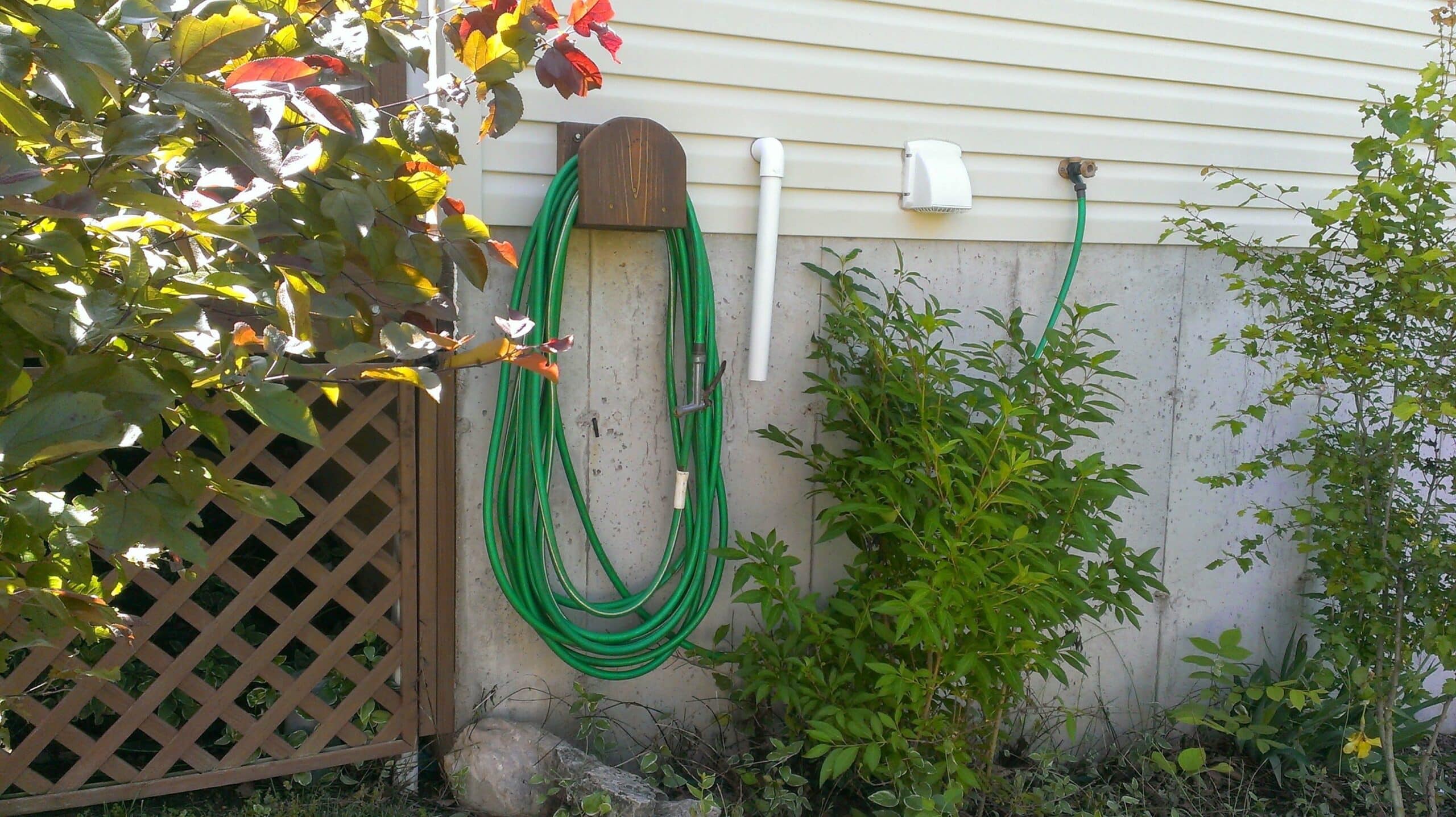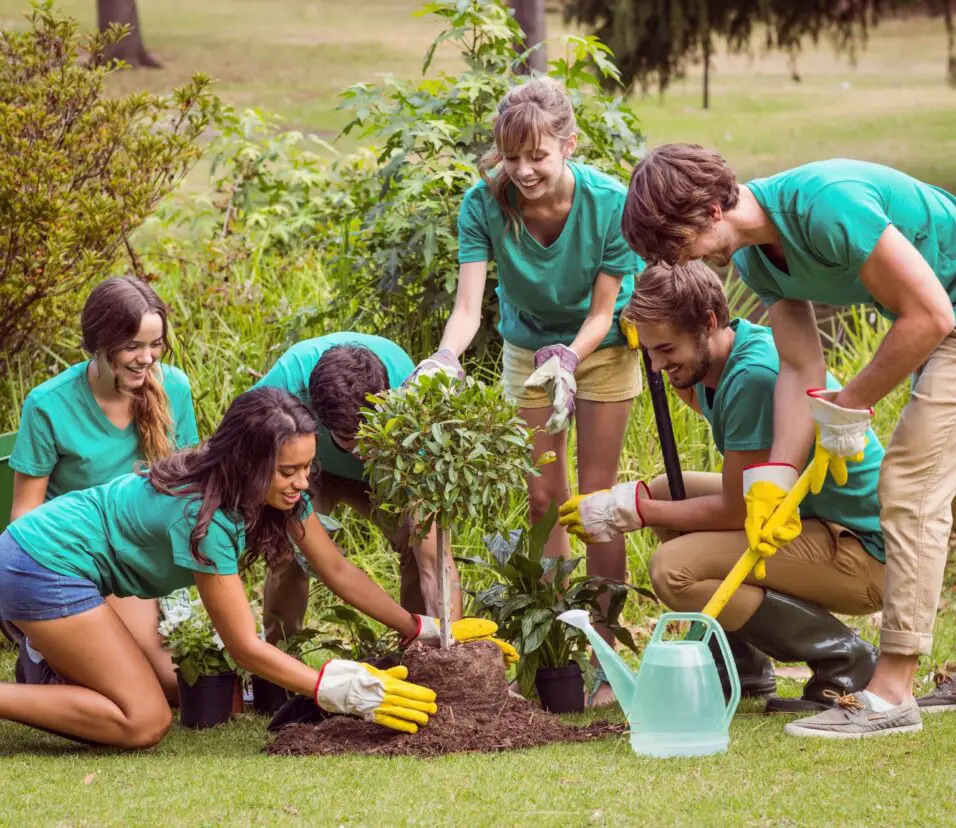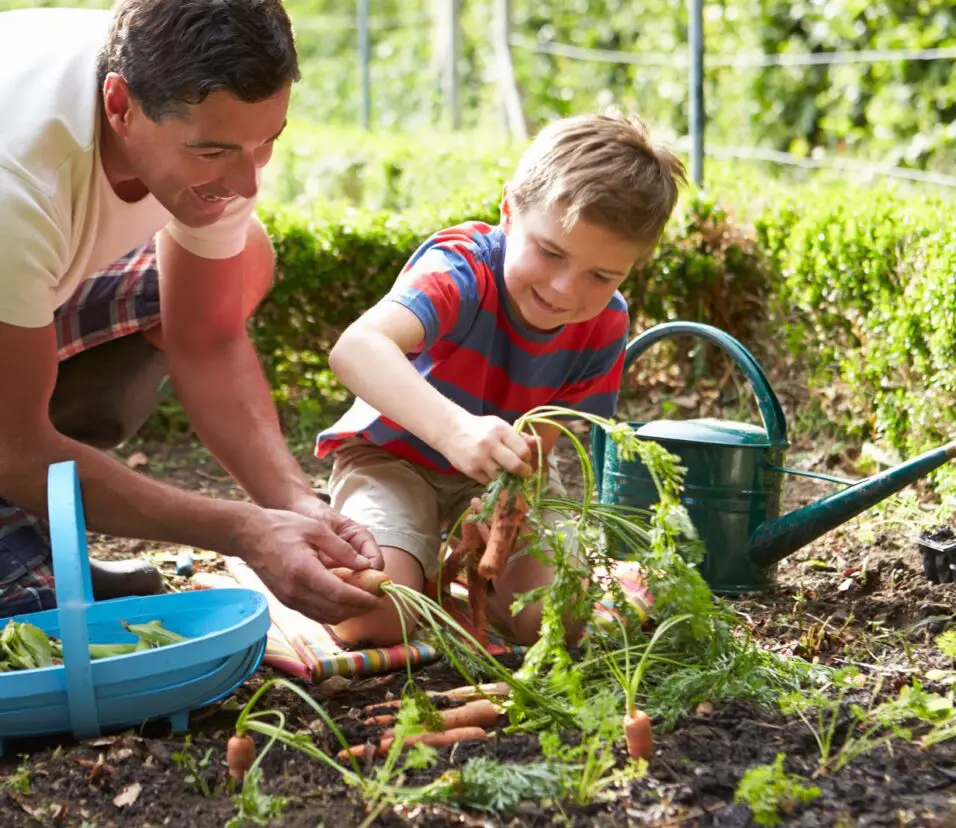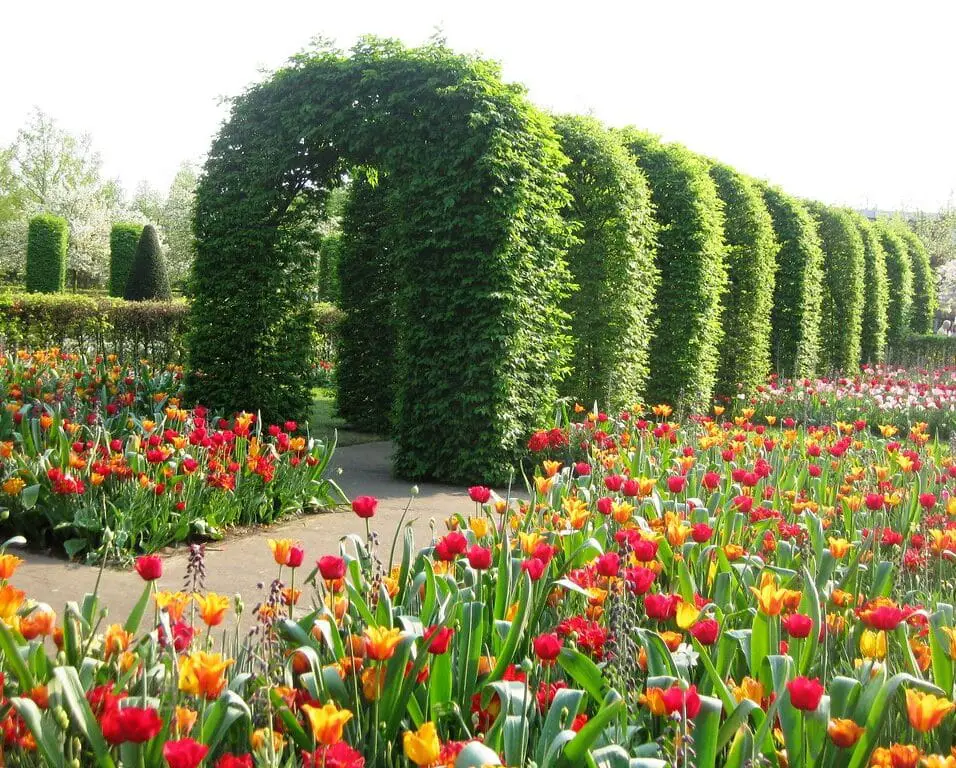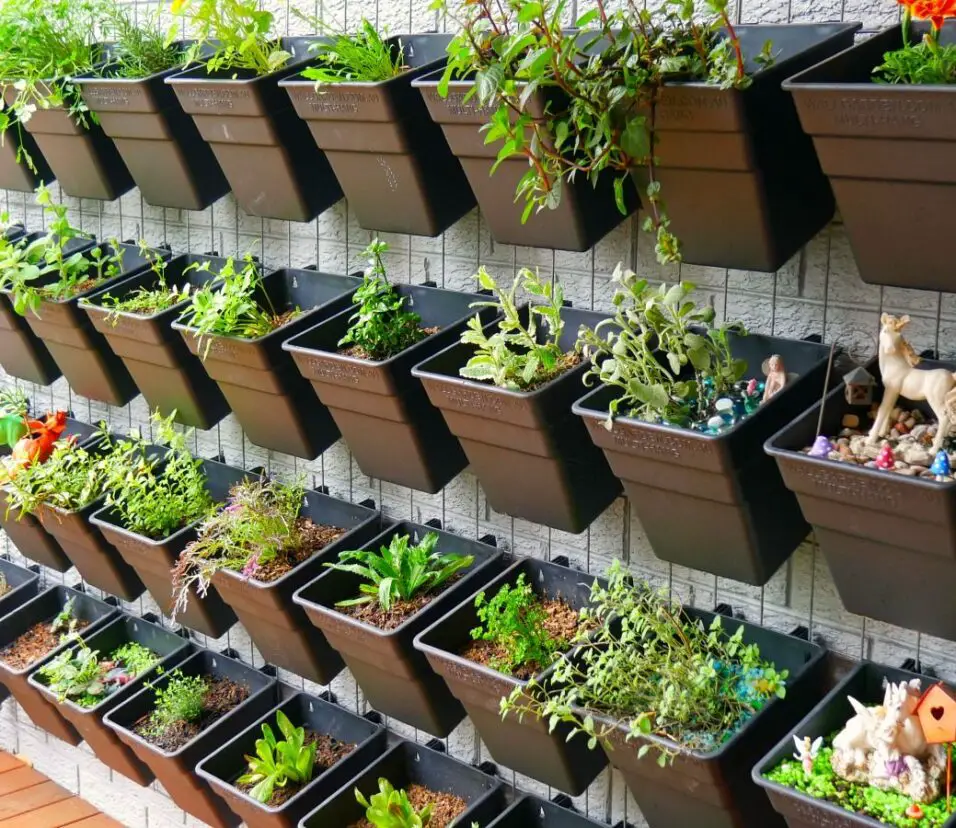How To Hook Up Outdoor Sink Using Garden Hose
Introduction
How To Hook Up Outdoor Sink Using Garden Hose: Creating an outdoor sink can be a game-changer, whether you’re an avid gardener, a backyard barbeque enthusiast, or just someone who enjoys spending time outdoors. Having a dedicated space to wash hands, clean tools, or rinse off fruits and vegetables can greatly enhance the convenience and functionality of your outdoor space. The best part is, you don’t need complex plumbing installations – all you need is a garden hose and a few basic tools to hook up your outdoor sink effortlessly.
Take you through the step-by-step process of setting up an outdoor sink using a garden hose, transforming your outdoor area into a versatile and functional oasis. No more running back and forth inside to wash up or clean up after outdoor activities; now, everything you need is just a few steps away. We’ll begin by outlining the essential tools and materials required for the project. Next, we’ll guide you on selecting a suitable outdoor sink that aligns with your needs and complements your space. From compact standalone sinks to larger, more elaborate setups, there’s a wide range of options to choose from based on your preferences and available space.
Once you’ve selected the perfect outdoor sink, we’ll dive into the core of the process – connecting the sink to a garden hose. We’ll walk you through the simple steps of attaching the hose to the sink’s water supply and ensuring a secure and leak-free connection. Additionally, we’ll cover the importance of using an outdoor faucet adapter and plumber’s tape to guarantee a tight and reliable seal.
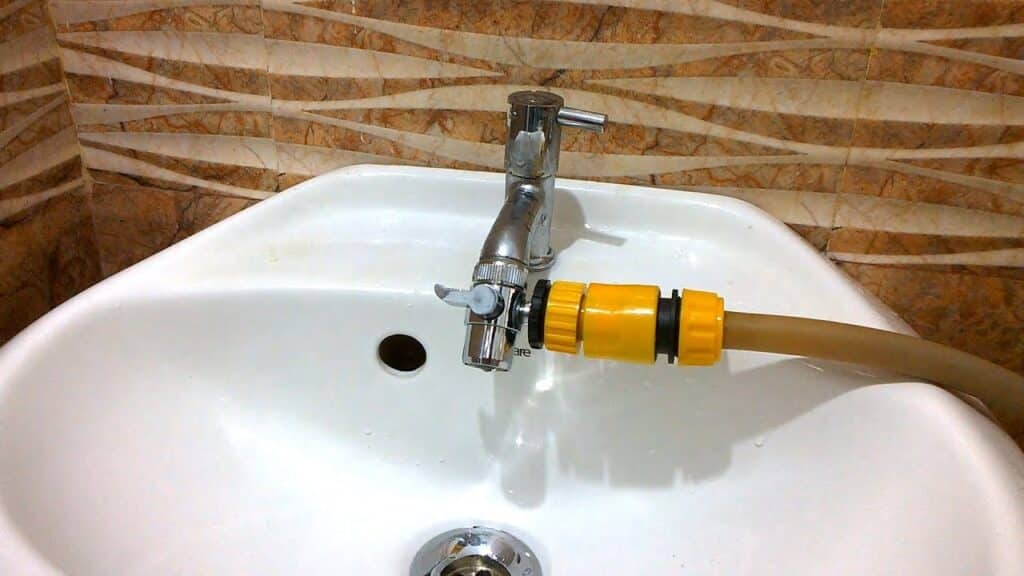
Is An Outdoor Water Faucet To Which A Garden Hose May Be Attached?
The hose bibb, or spigot, is the outdoor faucet where you connect a garden hose. To prevent hose bibb flooding in winter, homeowners must switch off the water.
A spigot or hose bib, or external water faucet, is usually found on the outer walls of residential and business structures. Its main purpose is to give easy-to-access water for outdoor activities. Outdoor water faucets are designed to make garden hose attachment easier. Its versatility makes it ideal for gardening, grass care, car washing, and other outdoor jobs.
Outdoor water faucets, usually brass or stainless steel, can resist the elements and continuous use. Threaded spouts safeguard garden hose connections. The US standard for outdoor faucet threads is 3/4 inch, which works with most garden hose couplings and adapters.
A garden hose can be attached to an outdoor water faucet by screwing one end into the faucet’s threaded spout. Hand-tightening typically seals, but pliers can prevent leaks with an extra turn. Plumber’s tape (Teflon tape) on faucet threads can also prevent leaks.
Outdoor water faucets with garden hose attachments are really convenient. It saves time and effort by eliminating indoor water sources for outdoor tasks. Gardeners can water plants, lawns, and garden beds, while homeowners may wash cars, clean outdoor furniture, and fill kiddie pools without hauling water from the house.
How Do You Drain Water From An Outdoor Sink?
There are multiple ways to drain an outdoor sink! Some examples are by using a bucket under the sink, a dry well, or using a self-contained lift station. But check in with your local plumber to make sure that you’re following local codes.
To begin draining the outdoor sink, start by turning off the water supply. Locate the shut-off valve or faucet handle connected to the sink’s water supply line and close it firmly. This ensures that no more water will flow into the sink during the draining process. Next, remove any objects or debris from the sink basin to facilitate water flow. If there is a drain plug or stopper, remove it to allow the water to escape freely.
Direct Drain Connection
If your outdoor sink is connected to a permanent drain line, water will flow out through this system automatically. Ensure that the drain pipe is clear and free from any blockages that might obstruct the water flow. Gravity will do the work, and the sink should empty completely.
Gravity-Based Drainage
For sinks without a direct drain connection, you’ll need to utilize gravity to drain the water. This can be achieved by tilting the sink slightly or using a sloped basin design to allow the water to flow towards the desired drainage area. Position a bucket or container beneath the sink’s drain area to collect the water as it flows out.
Where Is The Water Valve For Outside Hose?
To turn off the water to the outside faucet, look for a valve close to the ceiling in the wall. Outside shut-off valves that look like taps or knobs should be turned left or right to turn them off.
The outdoor hose water valve, also called a tap or hose bib, is located based on how your home is laid out and your plumbing system. The outside hose water valve, on the other hand, is usually put somewhere else.
Exterior Wall: Water valves are often located on the outside of homes and sheds. Find an under-the-floor wall tap. To change the flow of water, turn the tap knob.
If you need to water more than one spot on your land, there may be outdoor faucets in the garden or yard. For easy access, outdoor taps are often mounted on posts or walls.
Some older homes may have water lines in the basement or crawl space that can be used for outside faucets. The valve may be in the basement or crawlspace where the outside tap comes out of the wall.
This could happen if the garage is close to a wall on the outside. The outside hose water valve could be inside.
What Is The Difference Between Hose Pipe And Garden Hose?
Hoses are rigid kind of tubes whereas pipes are more flexible than hoses. This difference in flexibility arises due to their different composition of constituent materials. Due to their structural difference, hoses are used at home and pipes are used both at home and large industries.
The terms “hose pipe” and “garden hose” are often used interchangeably, but there are some differences between the two in certain contexts and regions. Primarily, the differences lie in the usage, materials, and regional preferences.
Usage
Its main purpose is to deliver water from an outdoor faucet to water plants, lawns, and garden beds or for various outdoor chores like car washing and cleaning.
Materials
Garden hoses often come with various layers for added strength and to prevent kinking. Hose pipes, being a more general term, can encompass a wider range of materials.
Regional Variations
As mentioned earlier, the term “garden hose” is more commonly used in North America and some other regions, while “hose pipe” is a term often used in the UK and some Commonwealth countries. However, it’s important to note that there can be regional variations and individual preferences in the use of these terms.
In summary, the main difference between a “hose pipe” and a “garden hose” lies in the terminology and the specific usage, with “garden hose” being more specific to outdoor watering and gardening activities, and “hose pipe” being a broader term that can encompass hoses used for various indoor and outdoor purposes.
Are All Garden Hose Connectors The Same?
Garden hose connectors usually come in 3/4 or 5/8-inch. It is according to the inside diameter of the hose. Garden hose fittings also vary accordingly and the most popular size is 3/4-inch or 11.5NH.
Garden hose connectors come in a variety of sizes, types, and styles to accommodate different hose diameters, water sources, and hose attachments. Understanding the differences between these connectors is essential to ensure a proper fit and prevent any leaks or compatibility issues.
Size
Garden hoses typically come in standard sizes, with the most common being 1/2 inch, 5/8 inch, and 3/4 inch. Correspondingly, garden hose connectors are manufactured to match these sizes. It’s crucial to choose a connector that matches the size of your garden hose to achieve a secure and leak-free connection.
Type of Connection
Garden hose connectors can be threaded or quick-connect types. Threaded connectors have male and female ends with threading that allows you to screw them together. Quick-connect connectors use a snap-on mechanism, which enables you to attach and detach the hose easily with a push and click motion. Both types have their advantages, and the choice depends on personal preference and intended use.
Material
Garden hose connectors are made from various materials, including brass, plastic, and stainless steel. Brass connectors are durable and less likely to corrode, making them a popular choice for their longevity. Plastic connectors are lightweight and budget-friendly but may not be as durable. Stainless steel connectors offer excellent rust resistance and strength.
Functionality
Some garden hose connectors come with built-in shut-off valves, allowing you to control the water flow directly from the connector. This can be convenient when changing attachments or when you need to temporarily stop water flow without going back to the faucet.
Specialty Connectors
There are specialty garden hose connectors available to cater to specific needs. For example, there are faucet-to-hose adapters that allow you to connect a hose to an indoor faucet, reducing the need for multiple outdoor faucets. There are also Y-connectors, which split one hose into two, enabling you to use multiple hoses simultaneously.
Can You Use A Hose For An Outdoor Sink?
An outdoor sink stationed outside is designed to hook up directly with the water faucet for the garden hose, and you will still be able to use the hose. There are several advantages when you hook up the outdoor sink with a garden hose. It can function as both a garden hose holder and storage holder.
To use a hose for an outdoor sink, follow these steps:
Select the Right Outdoor Sink: Choose an outdoor sink that is compatible with a garden hose. Some outdoor sinks come with built-in hose connectors, making it easy to attach the hose directly.
Connect the Hose: If the sink doesn’t have a built-in hose connector, you can use a hose bib adapter or a quick-connect hose adapter. These accessories allow you to attach the garden hose securely to the sink’s water supply.
Drainage: Ensure that the sink has proper drainage. You can either connect a hose to the sink’s drain and direct it to a suitable drainage area or position the sink so that water can flow away naturally, if the sink has a sloped design.
Using a hose for an outdoor sink offers flexibility and mobility. You can easily move the sink to different locations in your outdoor space, providing a convenient water source where needed. This versatility is particularly beneficial for gardening tasks, washing outdoor equipment, or hosting outdoor events where access to water is essential.
How Do You Make An Outdoor Sink With A Garden Hose?
DIY Outdoor Sink Project Directions:
- Drill hole for faucet. Drill a hole in one tub near the back edge.
- Make garden hose attachment. Apply thread tape to the threaded end of the straight pipe and twist that onto the other end of the elbow.
- Hose adapter.
- Create the lid.
- Attach the lid.
Creating an outdoor sink with a garden hose is a straightforward and cost-effective DIY project that can greatly enhance the functionality of your outdoor space. By following these steps, you can set up a practical and portable outdoor sink using a garden hose:
Select the Sink
Choose a suitable sink for your outdoor space. You can repurpose an old kitchen or utility sink, or purchase a new one that fits your needs and preferences. Ensure the sink has a drain hole and preferably a sloped design for efficient drainage.
Location
Decide on the location for your outdoor sink. It’s best to place it near an outdoor faucet to easily connect the garden hose for water supply. Additionally, consider the accessibility of the sink for your intended tasks.
Prepare the Area
Clear the chosen area and level the ground where the sink will be placed. If needed, create a stable base for the sink using bricks, concrete blocks, or a wooden platform.
Connect the Garden Hose
Attach the garden hose to the outdoor faucet or hose bib near the sink location. Use an appropriate hose bib adapter or quick-connect fitting for a secure connection.
Install the Sink
Position the sink on the prepared base and make sure it sits level. If the sink has mounting brackets or holes, use screws or bolts to secure it in place. Seal any gaps between the sink and the base to prevent debris from getting underneath.
Drainage
Connect a hose to the sink’s drain and direct it to a suitable drainage area, such as a nearby garden bed or a drainpipe. Alternatively, you can install a bucket or container below the drain to collect the water for reuse in your garden.
Optional Feature
Depending on your preferences, you can add some optional features to your outdoor sink. For example, you can install a faucet handle on the sink if it doesn’t have one, or add a shelf or hooks nearby to store gardening tools and accessories.
Test the Sink
Once everything is set up, turn on the water supply from the outdoor faucet and check for any leaks or issues with the sink and hose connections.
Where Do Outdoor Sinks Drain To?
Building codes usually require that your sink drains into a sewer or septic system.
Outdoor sinks typically drain to a designated drainage area or a specific system, depending on their setup and location. The drainage method can vary based on the sink’s purpose, local regulations, and personal preferences. Here are some common drainage options for outdoor sinks:
Direct Drainage to the Ground
Some outdoor sinks have a drainpipe that directly leads the wastewater to the ground. However, it’s essential to consider the environmental impact and avoid draining harmful substances or chemicals into the ground.
Bucket or Container
Another option is to place a bucket or container below the sink’s drain to collect the wastewater. This method allows for easy disposal or reuse of the collected water for gardening purposes, reducing water wastage.
Connect to a Drainage System
For more permanent outdoor sinks or those located closer to the house, you can connect the sink’s drain to the main drainage system. This requires proper plumbing and may be subject to local building codes and regulations.
Greywater System
Some outdoor sinks can be integrated into a greywater system, which collects and treats wastewater from various sources, including sinks, showers, and laundry. The treated water can then be reused for non-potable purposes like irrigation or flushing toilets, promoting water conservation.
Rain Garden or French Drain
In eco-friendly setups, the outdoor sink’s wastewater may be directed to a rain garden or French drain. These systems allow water to be naturally filtered and absorbed into the ground, reducing the risk of water runoff and promoting environmental sustainability.
Storage Tanks
In more elaborate setups, the outdoor sink’s wastewater may be collected in storage tanks, where it can be treated or utilized for specific purposes like flushing toilets or irrigating landscapes.
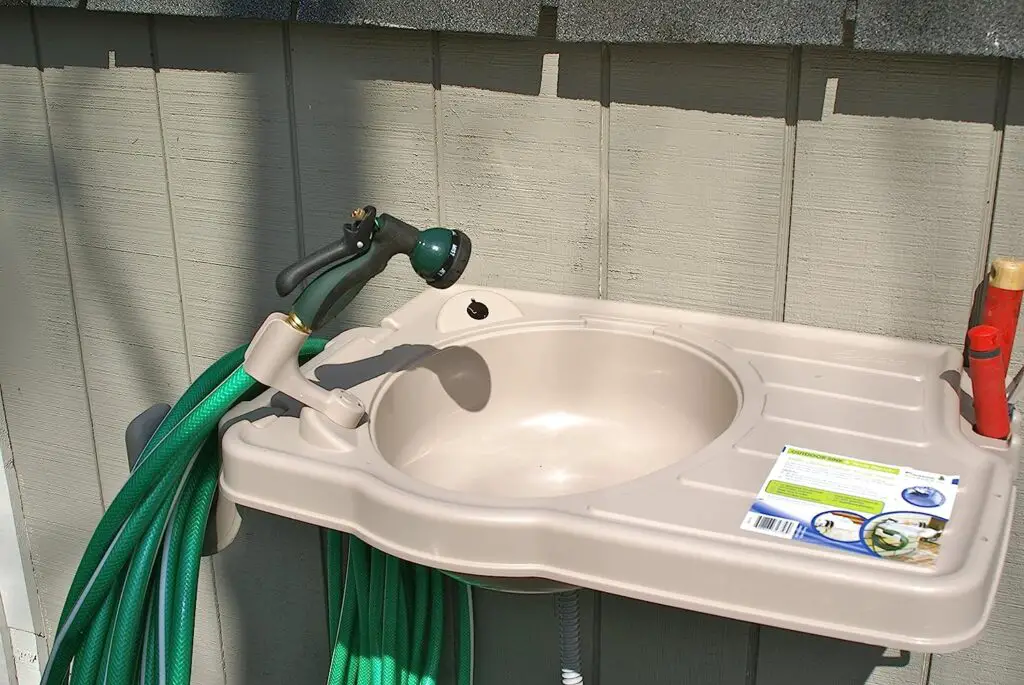
Conclusion
Hooking up an outdoor sink using a garden hose is a practical and accessible DIY project that can significantly enhance the functionality of your outdoor space. With the right tools and materials, setting up an outdoor sink becomes a straightforward process that offers convenience and versatility for various outdoor activities.
By following the step-by-step guide outlined above, you can easily select a suitable outdoor sink, ensure the right connectors and adapters, and securely attach the garden hose to the sink’s water supply. The use of teflon tape and checking for leaks during the installation ensures a reliable and leak-free connection.
Remember to turn off the water supply to the outdoor sink when not in use, especially during colder months, to prevent freezing and potential damage. Properly storing the garden hose and protecting it from extreme weather conditions further extends its lifespan and functionality.
Having an outdoor sink connected to a garden hose brings several benefits, including easy access to water for gardening, lawn maintenance, car washing, and outdoor gatherings. It eliminates the need to transport water from inside the house and provides a practical solution for outdoor tasks.



